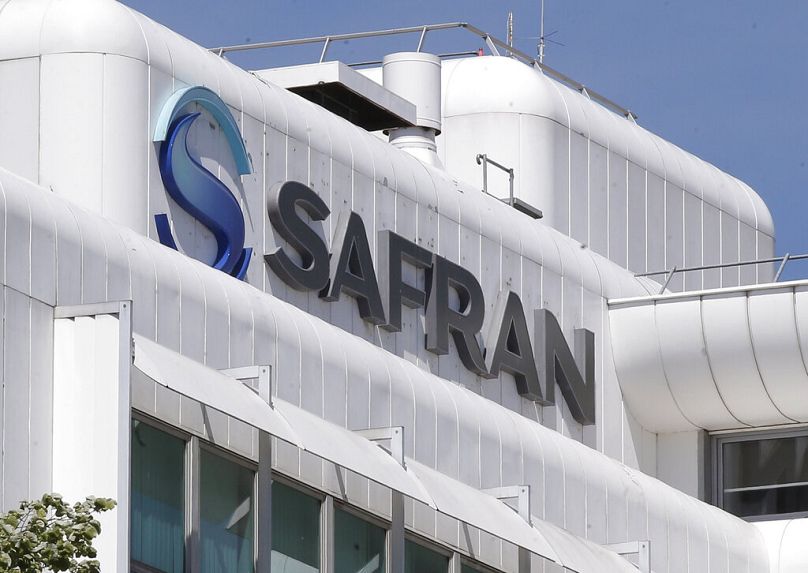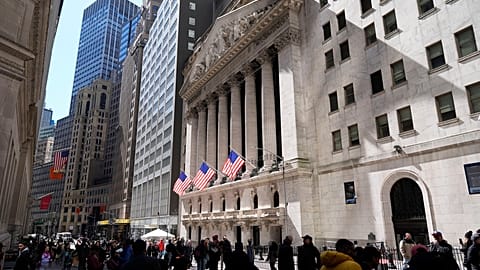After a multi-month record-breaking bullish run, European defence stocks saw a sharp decline following Goldman Sachs' overvaluation warning. The downturn sparks concerns about an end to the sector's uptrend.
The defence sector has emerged as one of the best performers in the past two years, spurred by the Ukraine-Russia war. Notably, the European defence and aerospace stocks have been outpacing their US peers, with Germany's biggest arms manufacturer, Rheinmetall's shares soaring approximately 540% since February 2022.
Other defence stocks such as the biggest British aerospace manufacturer, BAE Systems, and the French defence corporation, Safran, rose 114% and 176%, during the same period.
However, the record run has taken a breather following a cautionary note from the investment bank Goldman Sachs regarding valuations, sparking concerns of an upend of the defence sector. But why do traders worry about their record run?
Concerns of an overvaluation
According to Goldman Sachs, European defence stocks are trading at a 45% premium to the broad equity markets, suggesting potential overvaluation within the sector.
The Euro Stoxx Aerospace & Defense Index (SXPARO) has surged approximately 194% since February 2022, while the Stoxx Europe 600 Index (SXXP) has risen by a more modest 24%.
The top 10 components of the SXPARO, including Airbus, Safran, BAE Systems, Rolls Royce GE, Rheinmetall, Thales, MTU Aero Engines, Melrose Industries, Leonardo, and Saab B, all outperformed the broad market over the past two years. This outperformance coincided with increased investor interest in defence and aerospace stocks amid rising government budgets for the sector.
The Price-to-Earnings (P/E) Ratios for some of these stocks, such as Rheinmetall and Safran, are around 45, significantly higher than the ratio of 15 for the SXXP and 22 for the European Industrial sector. Consequently, traders have valid reasons to be cautious about such high multiples, and Goldman Sachs' warning may have prompted a profit-taking moment across the sector, leading to a sharp correction in European defence stocks.
However, the sell-off brings another question: has the uptrend of these stocks ended here or is it merely a temporary setback before another bullish wave? The answer may hinge on the growth prospects of individual companies juxtaposed against their current market valuations. Below is a glance at the past performance and prospects of the two most highly valued defence stocks in this group.
Rheinmetall expects sales to top €10 billion in 2024
Rheinmetall's shares benefited the most from the mounting military spending in Europe, with its market value surging to €22.69 billion from €4 billion two years ago. Its overall annual sales rose 12% to €7.2 billion, with its second-biggest division, the weapon and ammunition sales jumping 29% to €1.8 billion in 2023, accounting for about 24% of its overall sales revenue.
Other major divisions, such as vehicle systems and electronic solutions, rose by 14% and 13% from a year ago. The company expects sales to reach a record of more than €10 billion this year or a 39% growth. This implies a growth rate more than triple that of 2023.
Furthermore, the company's operating margin has steadily increased to 12.8% in 2023, following a 12% in 2022 and 10.5% in 2021. In its full-year earnings statement, Rheinmetall sees the figure to reach between 14% and 15% in 2024. Hence, a multiple of 45 may not necessarily indicate significant overvaluation when considering its growth prospects.
Safran sees an 18% growth in sales in 2024
In 2023, overall revenue at the French aerospace and defence corporation, Safran, rose 22% from a year ago to €23.2 billion, with its operating income up 31% to €3.1 billion. However, the growth slowed from the 25% annual increase in 2022.
Sales were primarily driven by its Civil engines, particularly the LEAP delivery, up 38% from 2022, while its military engines slid 18% in delivery in 2023. The company expects its sales revenue to reach €27.4 billion, or an annual growth of 18% in 2024, suggesting a further slowdown from its sales in 2023. Therefore, Safran's growth trajectory may not fully justify its current P/E ratio of 43.
The European Union targets higher defence budgets
Nonetheless, the ongoing geopolitical tension may continue to support the European defence sector's further growth. The average European defence spending was 1.6% of the GDP last year, short of the 2% NATO-set target, which requires an increase in 2024.
In 2023, military spending rose 4.5% from 2022 to a record of €280 billion, and the amount will rise to €350 in 2024, according to the European Commission President Ursula von der Leyen.
Since Russia's aggression on Ukraine in February 2022, 78% of defence acquisitions made by EU member states were from outside of the region, with 63% from the US.
Early in March, the first-ever European Defence Industrial Strategy set targets of buying at least 40% of the defence equipment collaboratively, at least half of defence procurement budget within the UE by 2030 and rise to 60% by 2035. It encourages member countries to "invest more, better, together and European. "



















